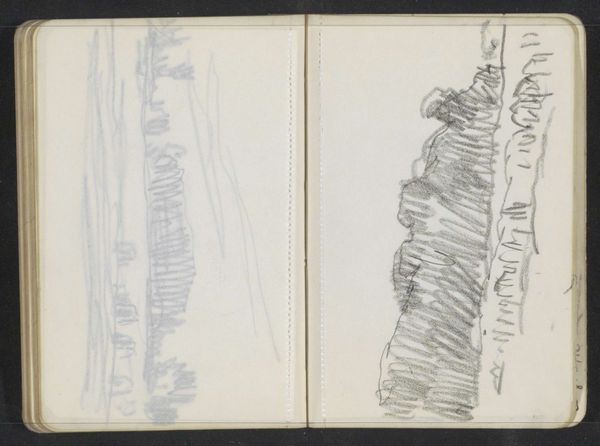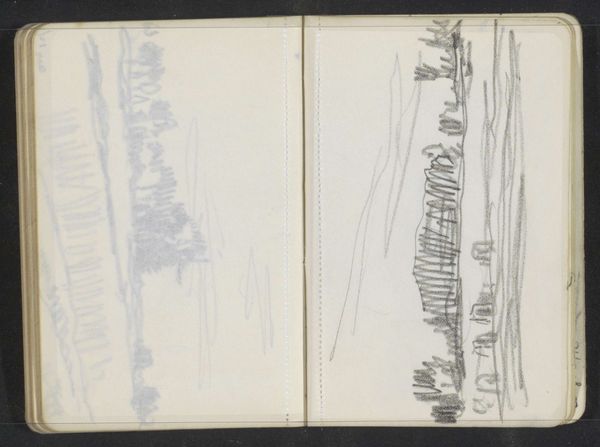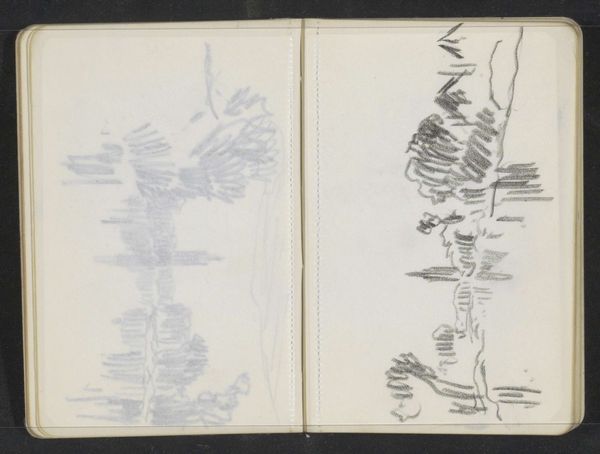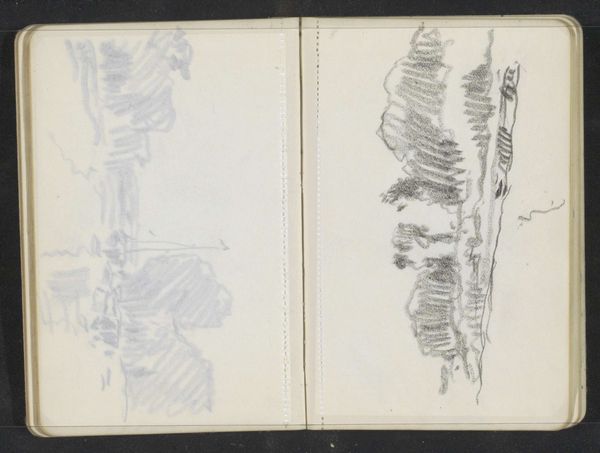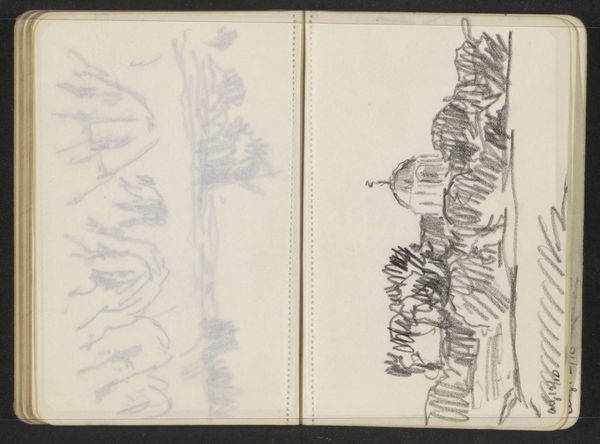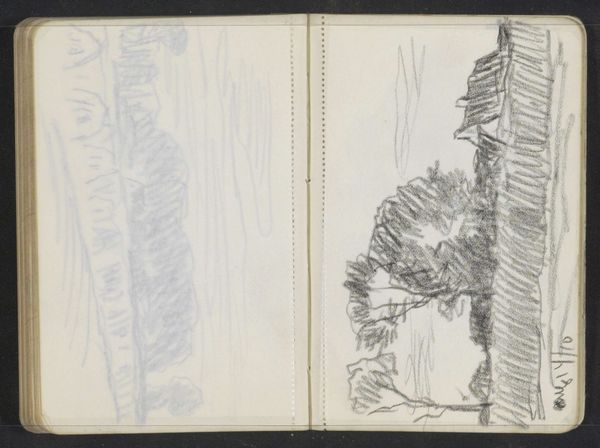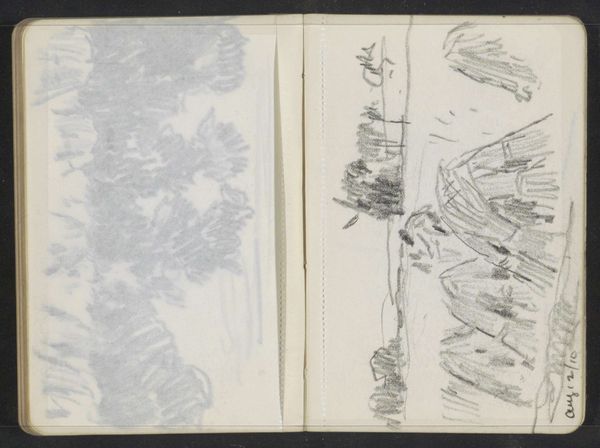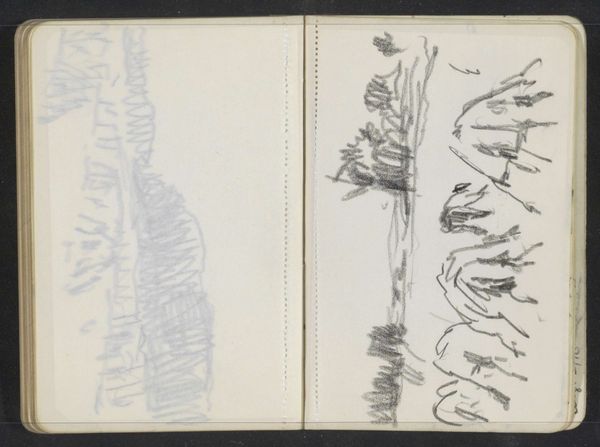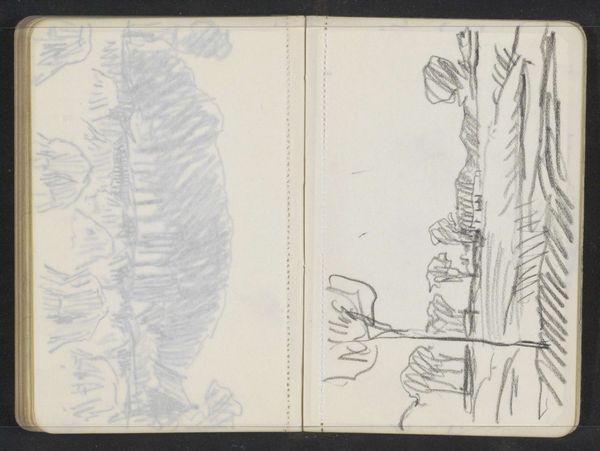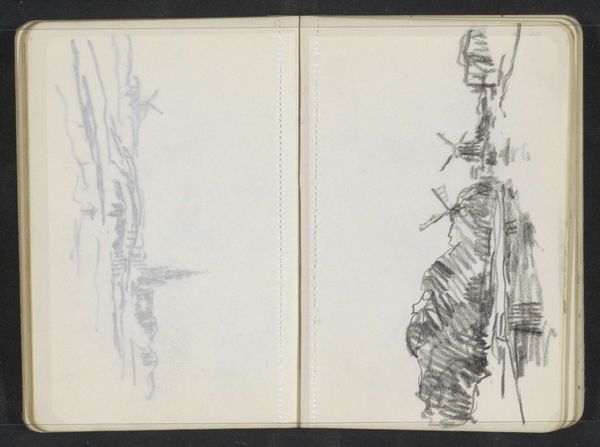
drawing, pencil
#
drawing
#
light pencil work
#
quirky sketch
#
pen sketch
#
sketch book
#
hand drawn type
#
landscape
#
personal sketchbook
#
geometric
#
sketch
#
pen-ink sketch
#
pencil
#
pen work
#
sketchbook drawing
#
sketchbook art
Copyright: Rijks Museum: Open Domain
Editor: Here we have Alexander Shilling's "Landschap met een brug, molen en kerktoren," created around the 1900s. It's a delicate sketchbook drawing done in pencil, and there's a raw quality to it that feels very intimate. What can you tell me about Shilling's process when creating something like this? Curator: We're presented with two pages of a sketchbook, documenting the artist's fleeting observations. The drawing embodies labor in its most immediate form: the physical act of Shilling’s hand translating the world onto paper, using the readily available materials of pencil and sketchbook. The quick, light strokes of the pencil suggest an almost automatic response to the landscape. Considering the period, I wonder if this method hints at Shilling's resistance against academic traditions in favor of a more personal, unfiltered engagement with the world. Editor: That’s interesting – the resistance part. So, instead of perfectly rendering every detail, he is capturing the raw data to translate in studio, almost? Does the landscape, even in its rudimentary state, offer hints? Curator: Absolutely. The bridge, mill, and church—they were all embedded within an industrializing society. As such, these are indicators of both pastoral nostalgia, in addition to being the backdrop for radical, modern ideas that challenged the prevailing structures. Did Shilling produce a more complete work later, or were these impressions simply to capture a space for future engagement? This focus on immediacy—of capturing sensory information – prioritizes process over outcome, and in doing so revalues drawing, traditionally conceived of as prep work, as art. Editor: The relationship between labor and leisure here is interesting, particularly with Shilling’s seeming departure from Academic convention. That has me seeing the art in an entirely different way. Curator: Yes, looking at this landscape sketch through a materialist lens unveils it as more than just a scene. It highlights the artist's choices of material and their reflection on a world being radically reshaped by new modes of labor. These sketches offer glimpses into the intersection of process and social context. Editor: Thanks; this discussion has made me really re-evaluate the sketchbook!
Comments
No comments
Be the first to comment and join the conversation on the ultimate creative platform.
